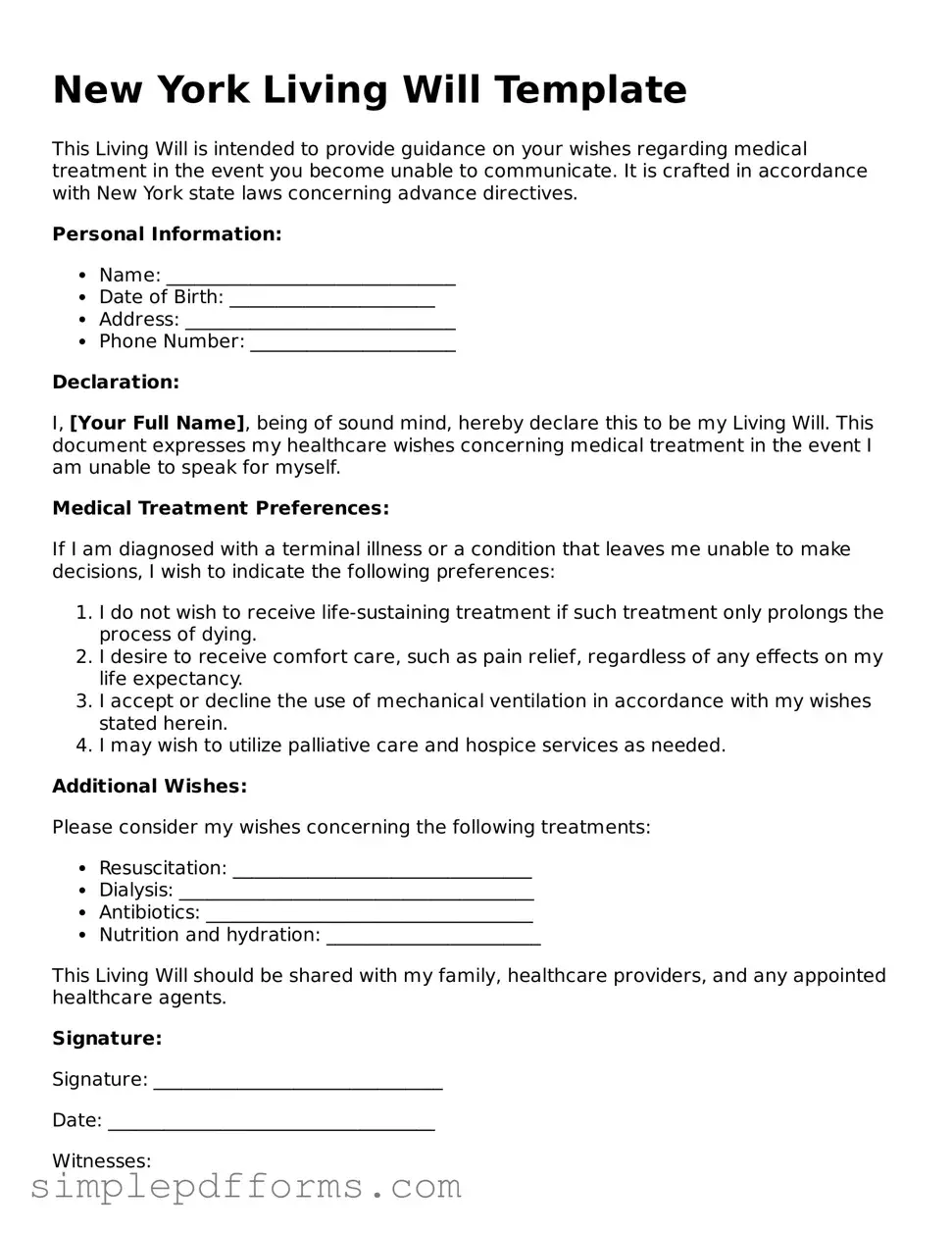New York Living Will Template
This Living Will is intended to provide guidance on your wishes regarding medical treatment in the event you become unable to communicate. It is crafted in accordance with New York state laws concerning advance directives.
Personal Information:
- Name: _______________________________
- Date of Birth: ______________________
- Address: _____________________________
- Phone Number: ______________________
Declaration:
I, [Your Full Name], being of sound mind, hereby declare this to be my Living Will. This document expresses my healthcare wishes concerning medical treatment in the event I am unable to speak for myself.
Medical Treatment Preferences:
If I am diagnosed with a terminal illness or a condition that leaves me unable to make decisions, I wish to indicate the following preferences:
- I do not wish to receive life-sustaining treatment if such treatment only prolongs the process of dying.
- I desire to receive comfort care, such as pain relief, regardless of any effects on my life expectancy.
- I accept or decline the use of mechanical ventilation in accordance with my wishes stated herein.
- I may wish to utilize palliative care and hospice services as needed.
Additional Wishes:
Please consider my wishes concerning the following treatments:
- Resuscitation: ________________________________
- Dialysis: ______________________________________
- Antibiotics: ___________________________________
- Nutrition and hydration: _______________________
This Living Will should be shared with my family, healthcare providers, and any appointed healthcare agents.
Signature:
Signature: _______________________________
Date: ___________________________________
Witnesses:
- Witness 1: _____________________________
- Witness 2: _____________________________
This Living Will was signed in the presence of the above witnesses on this ___ day of _____________, 20__.
